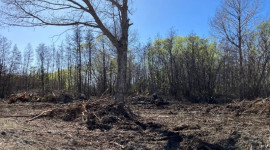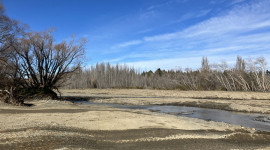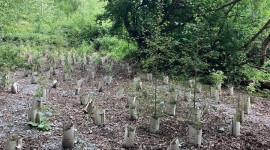Regionwide planting and berm transition
River berms and margins are the strips of land next to the active part of the riverbed where there are areas of unstable gravels and flowing channels.
Regionwide planting and berm transition project
This comprehensive project uses natural infrastructure to increase the flood resilience of river berms, which will also support the regeneration of habitat for native animals and plants across 22 awa/rivers throughout Canterbury. Natural infrastructure refers to actively managing naturally occurring elements to provide multiple benefits for the environment and community.
How to use this map
- The map shows the location of each berm transition work site, marked by a yellow location icon.
- Choose a river from the drop-down menu or select ‘All’ to see an overview of the rivers included in the project.
- Zoom into the location icons to see satellite imagery and individual site boundaries. Left click and drag to move around the map, right click and drag to rotate the map.
*For the best experience on smaller screens, turn your mobile to landscape.
Region planting and berm transition progress map
Berm transition - a nature-based solution
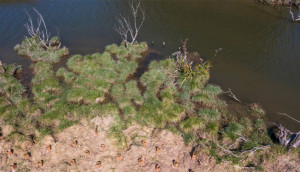
New planting in the Saltwater Creek berm
In the past flood risk management mostly involved conventional engineering measures like stopbanks and groynes to control flooding.
Along with councils from across New Zealand and around the world, we’re transitioning to a more holistic approach using nature-based solutions to complement engineering works.
Nature-based solutions make use of naturally occurring landscape features and natural ecological processes for functional purposes, like decreasing flood risk, preventing erosion, or improving water quality.
In addition, they help decrease vulnerability to climate change, creating multiple benefits to the environment and local communities.
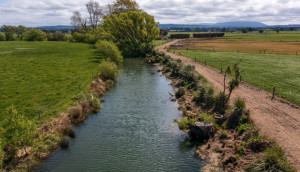
New planting on the right bank of Saltwater Creek
Planting trees in and around river margins is essential for flood resilience with the trees providing a buffer that both slows floodwaters and prevents erosion.
In addition to their value for flood protection, the margins of our iconic braided rivers support rich terrestrial and aquatic ecosystems that can only be found in braided river environments.
Enhancing natural infrastructure through planting and ongoing maintenance of our river berms results in a wide range of additional benefits. Things like:
- increased biodiversity
- weed control
- support for wetlands which help filter water and provide healthy habitats
- mahinga kai
- and opportunities for community recreational areas.
This project is a great example of how a holistic awa management strategy can provide both environmental and flood management benefits.
Achieving berm transition
Many river berms have become choked with weed growth and this is expected to accelerate with the effects of climate change.
The National Climate Change Risk Assessment states that “risks to indigenous ecosystems and species from the enhanced spread, survival and establishment of invasive species due to climate change” is one of the top two risks to the natural environment that must be addressed urgently.
Berm transition will be achieved by:
- Targeted invasive weed control
- Strategic flood protection vegetation planting
- Under-canopy native planting
- Establishing good access to allow for ongoing maintenance
- Creating and enhancing mahinga kai, native habitat and recreational opportunities.
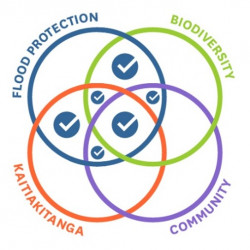
Our multi-benefit concept
Our key values
The scope of work for each of the 23 awa will be determined by the overlapping key values of:
- Biodiversity - nurturing a wide variety of important native plant and animal life in Aotearoa
- Kaitiakitanga/stewardship - caring for the land we live on, and the indigenous life we share it with
- Community - through contracting with local businesses, creating jobs and enhancing the rivers for mahinga kai and recreation, with
- Flood protection as the overarching driver.
This multi-benefit concept we’ve adopted ensures that our projects have the highest impact whilst always reflecting our primary goal of enhancing flood protection.
Works completed
The final delivery phase of this project included follow-up targeted spraying across most sites which was successfully completed in the last quarter of 2023. The team has been monitoring plant growth on our scour bay sites and have seen exceptional plant growth at multiple sites compared to conventional planting methods.
All of the major contracts for this project were also completed including outstanding tasks at the Tekapo/Takapō and Waipara sites marking the completion of this project.
All the final plant numbers per site are being finalised and can be found on the interactive map.

